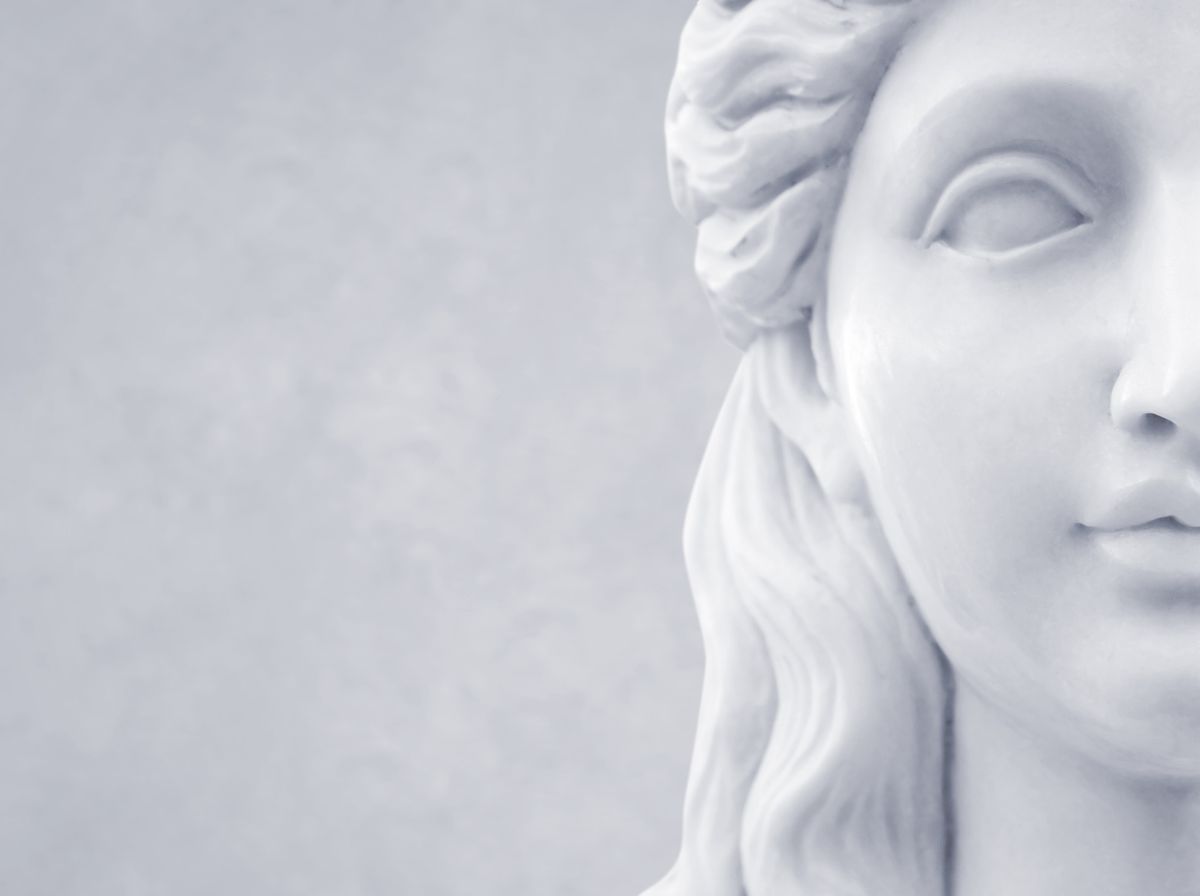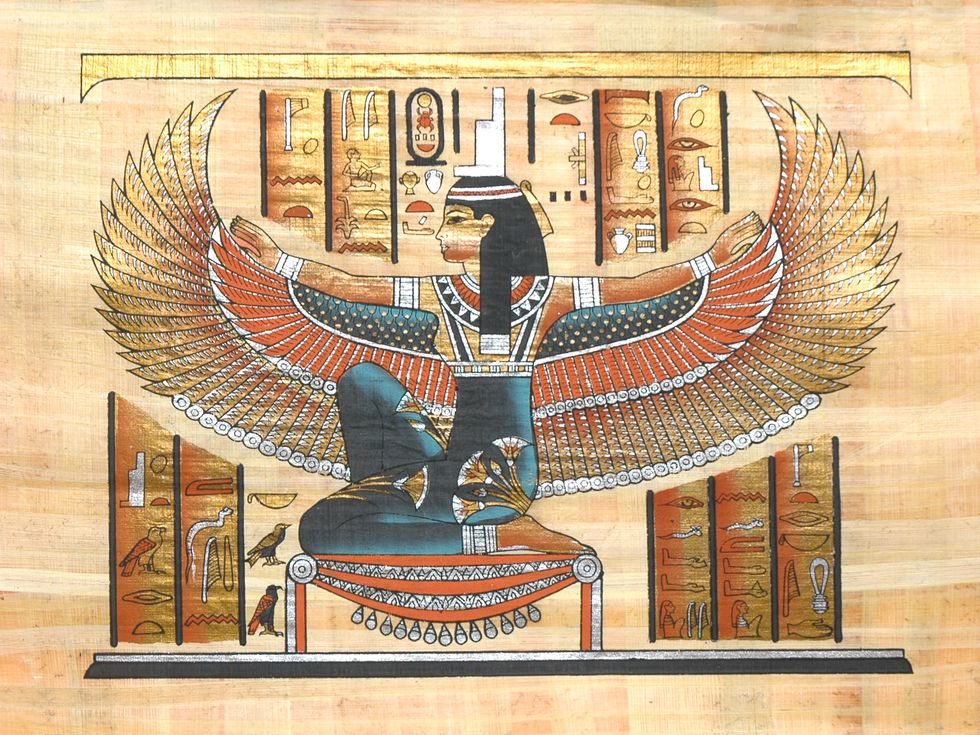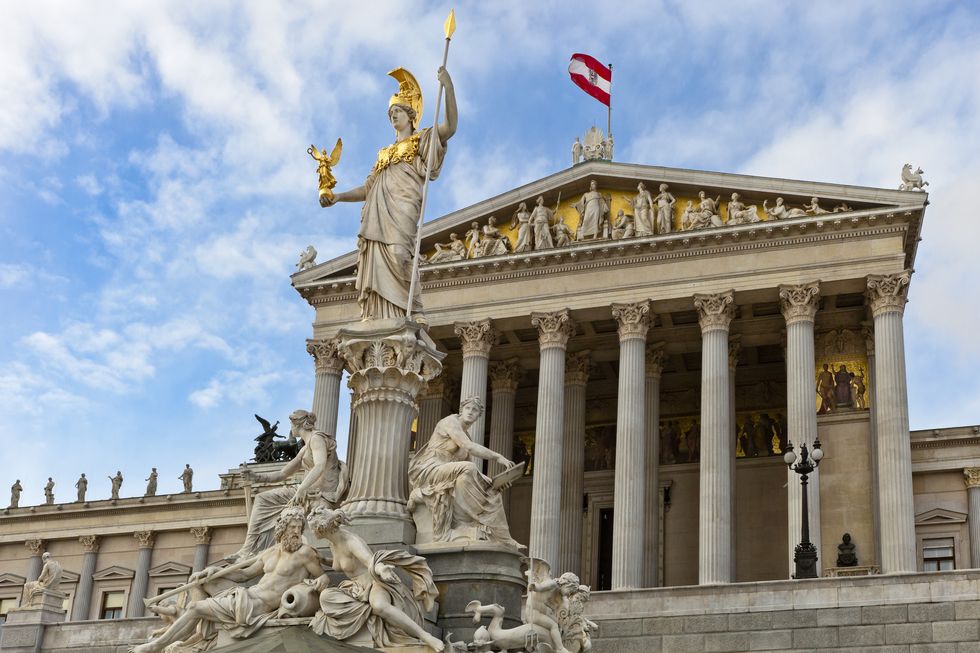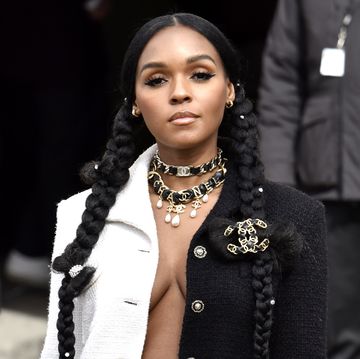In 2018, feminist media erupted in collective applause after Ariana Grande sang the famous words, “When all is said and done / You'll believe God is a woman.” Later that year, Beyoncé — radiating maternal energy, wearing a pale blue veil, and clearly referencing Botticelli’s Madonna of the Pomegranate — almost broke the internet when she released a photo announcing the birth of her twins. And in 2020, Cardi B was called out for appropriation after the Footwear News magazine dropped a cover featuring the star in Hindu goddess Durga’s likeness, to promote her Reebok Club C Collection.
It’s tempting to say, as Marisa Meltzer has for the New Yorker, that “Goddesses seem to be in season.” Deity worship — and the reclamation of an often-opulent, feminine aesthetic that signals strength, power, and liberation — makes perfectly logical sense in the wake of Hillary Clinton’s defeat, throughout Donald “grab ‘em by the pussy” Trump’s presidency, under the dark cloud cover of Covid-19, and while Black Lives Matter protests increasingly highlight the intersectionality between gender and racial inequity, and plenty more prescient crises.
But saying something is “in season” tends to imply that it wasn’t already. And, as Christobel Hastings wrote for Vice, the worship of female deities has been traced back to 25,000 BCE. “Indeed, anthropologists studying the rites and rituals of Paleolithic communities over the last two centuries have discovered countless stone figurines of pregnant women across Europe, the Middle East, and India that point to the worship of the divine feminine,” she wrote. One could say that Goddess culture is, actually, as old as time.
What these modern, celebritized manifestations of ancient cultural icons do represent, is, perhaps more accurately, a renaissance. Relating to one’s Goddess Archetype has become, for some, a practice much like reading a horoscope or taking an Enneagram test. The archetypes most commonly found today come in sets of seven, which typically center ancient Greek Goddesses — as popularized by psychoanalyst Jean Shinoda Bolen in her book Goddesses in Every Woman: A New Psychology of Women (1984) — or 12, which are based on the specific Goddess associated with each astrological sign. (Though there are many more archetypes and interpretations to be found in all corners of the internet.)
It’s a somewhat muddy discipline; various ancient and mythical threads and religions have been woven together and imbued with meaning and stories relevant for the modern era. However, at their core, each archetype represents a specific set of psycho-spiritual and behavioral patterns designed to celebrate a divine and kaleidoscopic feminine energy that seeks to empower women — though characteristics can be applicable no matter how one gender identifies — in self-discovery and alignment with a greater sense of joy, purpose, and understanding.
Not only do these archetypes highlight strengths, but shadow behaviors too. “Like the ancient Greek women who called on Aphrodite when looking for love, Demeter when they wanted a child, and Artemis when they sought protection, we too can nurture the qualities we lack, by appealing to the patterns of the corresponding goddess in possession of the qualities we desire,” one writer explained on Medium.
While internet quizzes and the like can offer a fun, albeit limited and stereotypical, starting point, the deeper connection with one’s Goddess “happens through meditation, energy work, ritual, and intuitive practices to receive and embody the energy of an archetype,” says priestess and women’s leadership mentor Flora Ware. “It is all about becoming more and more consciously aware of what makes you, you.” Astrologer and artist Caitlin Adams echoes that point, explaining that “true spiritual transformation requires work, research, and engagement.”
So, millennia later, why are we seeing a renewed desire to connect with Goddesses?
Goddesses Archetypes offer a sense of comfort and control
“I think with everything going on — all the anxiety and turmoil — people are reaching out to things like astrology, witchcraft, and tarot in an attempt to gain some control back in a way that is interesting, fun, and a little bit magical,” says Dr. Katie Fine, who has a PhD in Classical Archeology from Florida State University.
Adams agrees, adding that “Goddess archetypes, like astrological archetypes, are attached to mythologies and stories that help us to make meaning out of personal experience.” In this age of unprecedented uncertainty, the desire to seek clarity through ancient mythology seems, perhaps counterintuitively, deeply human.
They help us feel less alone
All this talk of archetypes might be ringing some Carl Jung bells, and for good reason. The term itself means “original pattern” in ancient Greek, and the Swiss psychiatrist and psychoanalyst is largely recognized as the modern grandfather of archetypal psychology.
Jung theorized that “archetypes are universal, recurring motifs and images that are perceived and experienced subjectively, while represented in a variety of ways — including through religion, mythology, and fairy tales,” says creative arts therapist Jane Kownacki. Jung’s studies suggest that each of his 12 archetypes has universal meanings across cultures, born from our collective unconscious, and as such are able to direct and influence present behaviors.
In the therapeutic setting, Kownacki taps archetypes to help clients explore the self when one’s firsthand experiences are too painful; the metaphor becomes the conduit to healing. Not to mention, relating to an archetype — whether that’s the Jungian Orphan; the Greek Goddess Athena; Goddess of Virgo, Demeter; or something else altogether — can help aid a person in feeling validated, more accepting of the self, and like they aren’t suffering alone.
“Knowing that you’re not floating along in isolation, and being able to grab onto something larger than the self, helps to soothe something within us,” adds Fine. “Particularly with everything going on in the world right now.”
They’re accessible and empowering, if also problematic
The seven Goddess archetypes we see most commonly represented (or derived from) today — Artemis, Athena, Hestia, Hera, Demeter, Persephone, and Aphrodite — stem from ancient Greek mythology.Which, according to Fine, is both understandable and problematic. “We’re the most familiar with this mythology, most importantly, because of the supremacy of the Greek world,” she says. Within western education systems, “we’ve put Greece on this pedestal, and it’s a major part of what we teach our students.”
Perhaps the greatest irony with modern archetypal interpretations is that these Goddesses were born in an ancient, patriarchal society — “created by men, for men,” says Fine. In other words: “Just because the Greeks worshipped Goddesses, does not mean they worshipped women.” Yet today they are being adopted as feminist symbols of strength and power. And, while the greatest myth might be the whiteness of the classical world, focussing on this particular set of Goddesses over, say, Hindu, Sumerian, or Buddhist deities, denies the many other cultures that engaged in and were responsible for their popularity today.
Yet Fine also believes it’s “cool and badass” that we’ve taken these ancient, mostly-dormant cultural remnants and reimagined them in our own vision. It’s hugely telling of where society is today. On one hand, concepts such as gender binaries — Goddess tropes can be limiting and “lead us to narrow, anti-feminist ideas about ourselves,” Adams explains — and white and patriarchal supremacy persists. On the other, we’re flipping those values on their head; “we’re saying, ‘I deserve to be worshipped,’” says Fine.
They can unlock passion, purpose, and direction
Archetypes have been well-criticized for being reductionist by nature. After all, “this information’s accessibility uses an easy pseudo-intellectual pathway — the common anti-feminist agenda of naming and titling,” Adams explains.
Yet, in her work as a spiritual counsel for women, Ware's use of archetypes “is spiritual, ceremonial, and for liberation, not limitation,” she explains. After a year where anxiety and depression were our dual oppressors, connecting with Goddess archetypes “is so popular now because they allure us to remember our innate gifts, our power, and our mystery,” she says.
In her work coaching women to heed these calls, she’s seen “big, beautiful” transformations through this “sacred work.” Her clients have left toxic jobs and unhappy relationships to create dream jobs, start families, “and gain the confidence and joy that previously eluded them.”
At the end of the day, for all the critiques deeming Goddess culture as passé, reductive, flaky, or anti-feminist, there is something powerful about acknowledging and celebrating inner life in a society that often seeks to deny it. One’s Goddess archetype — similar to an astrological sign — at the very least offers a conduit to conversation and understanding about ourselves and the world around us.
“Remember, the archetypes, the sisterhood, and the ceremonies are all simply tools to help women accomplish the most arduous and important work of all: to intimately know oneself,” says Ware. “Then, your entire life reflects the fullness and truth of who you are.”
Ali Francis is a writer and editor with bylines in Narratively, Vogue, Bon Appetit, Domino Magazine, and SELF—among others. She loves surfing, but is more likely to be found staring into her fridge in Brooklyn. Follow her on Twitter.
Get Shondaland directly in your inbox: SUBSCRIBE TODAY















